Is Google Maps making you 8% unhappier? (Patreon)
Downloads
Content
 </figure>
</figure>Here’s my crazy idea: Google maps is making people unhappier.
"We have a brain for one reason and one reason only, and that's to produce adaptable and complex movements. There is no other reason to have a brain.” -Daniel Wolpert, Neuroscientist
Daniel Wolpert explains in his TED talk that the only reason you have the faculties necessary to generate a consciousness capable of perceiving yourself as a human with a past, future and perhaps a meaning to your life is because you have the need to move through space. Then, he brings up the sea squirt.
<figure>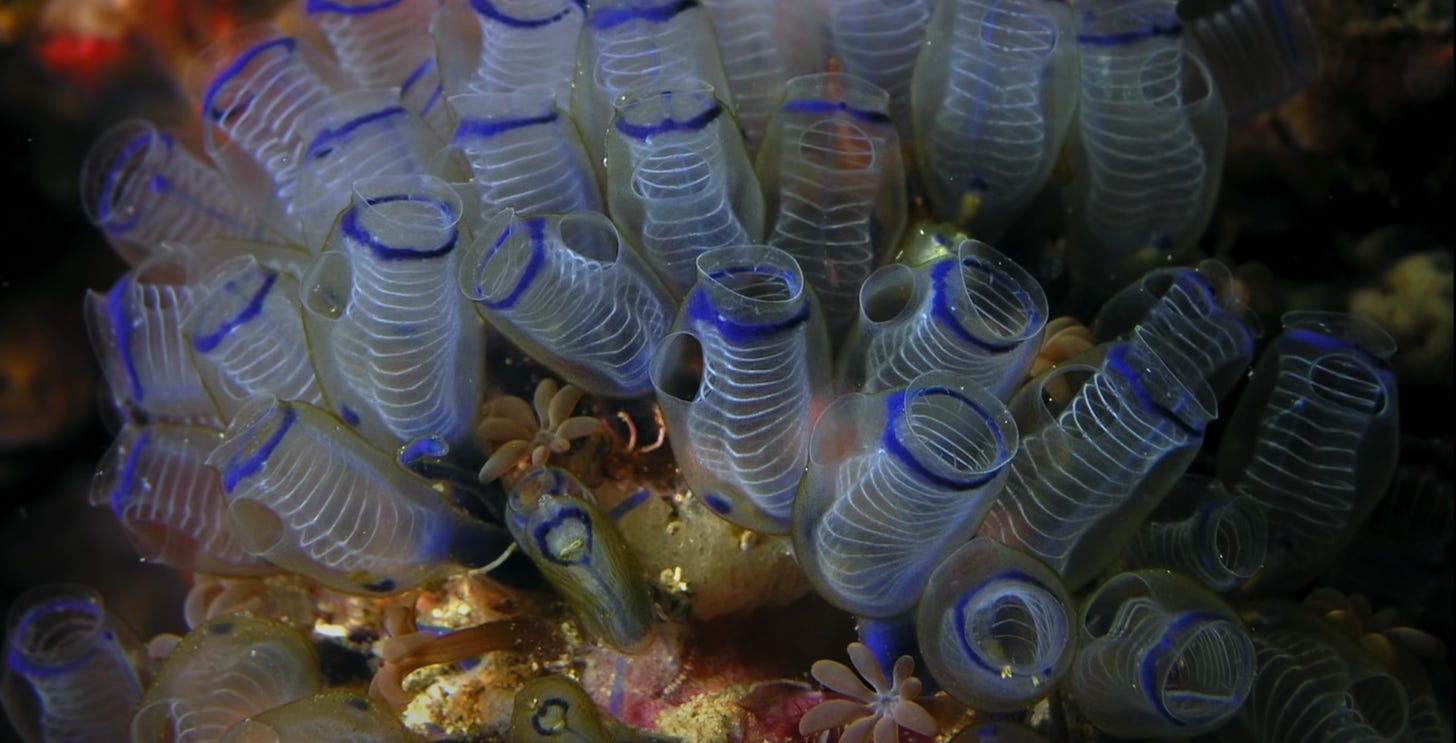 </figure>
</figure>Early in its life, the sea squirt has a nervous system (a rudimentary brain) that allows the sea squirt to produce effective and purposeful movement. The sea squirt embarks on a daring journey under the sea to fulfill its main life aspiration of finding a partner to cultivate a meaningful and fulfilling relationship with. The partner the sea squirt seeks is of course, a rock. Once it finds its soul rock, it will spend the rest of its life there. The sea squirt realizes that all that desperate movement it had been doing was all to find that special soulmate. Once it find its rock, it realizes it no longer needs to move and it promptly digests its own brain for energy.
Humans have an amazing capacity for awareness of the space around them. You likely orient yourself and talk about the locations of things based on relative orientation. That is, you’re probably saying “walk straight with the convenience store on your left,” or “give me the book next to the green armchair.” The Guugu Yimithirr, an aboriginal community in the far north of Queensland, Australia, talk about location using absolute orientation. That is, they would say “walk north,” or “give me the book on the eastern table.” This constant keeping track of absolute orientation has yielded the Guugu Yimithirr some very impressive navigation abilities.
A 1997 study describes how a researcher traveling with ten Guugu Yimithirr adult men would randomly ask the men to stop and point in the direction of some landmark that they knew of but was out of sight.
"the distances of these locations ranged from a few kilometers up to several hundred... the method consisted of halting at some spot with restricted visibility (e.g., among trees), asking the men to point to a series of locations... It was made plain that an accurate rather than an instant response was being asked for, but in most cases the response was within a couple of seconds, often an immediate gesture."
After 120 trials of this, the average degree of error with their pointing was only 13 degrees, or less than 4 percent. This was dramatically better performance than Europeans.
Given the varied nature of the locations where the readings were taken, the different speed of travel (foot, vehicle on good gravel road vs. bush track), the approximate nature of some of the readings due to impatience, lack of time, impending dusk, and so forth, the great distance of some of the locations pointed to, and in many cases their relative unfamiliarity, these are very impressive results (especially compared to the performance of Europeans).<figure>
 </figure>
</figure>The Guugu Yimithirr can also navigate effectively after dark.
This demonstrates just how fantastic humans’ spatial cognition can become. Spatial cognition is of course, the mental processes associated with perceiving and interpreting spaces, locations, directions, navigating et cetera.
<figure>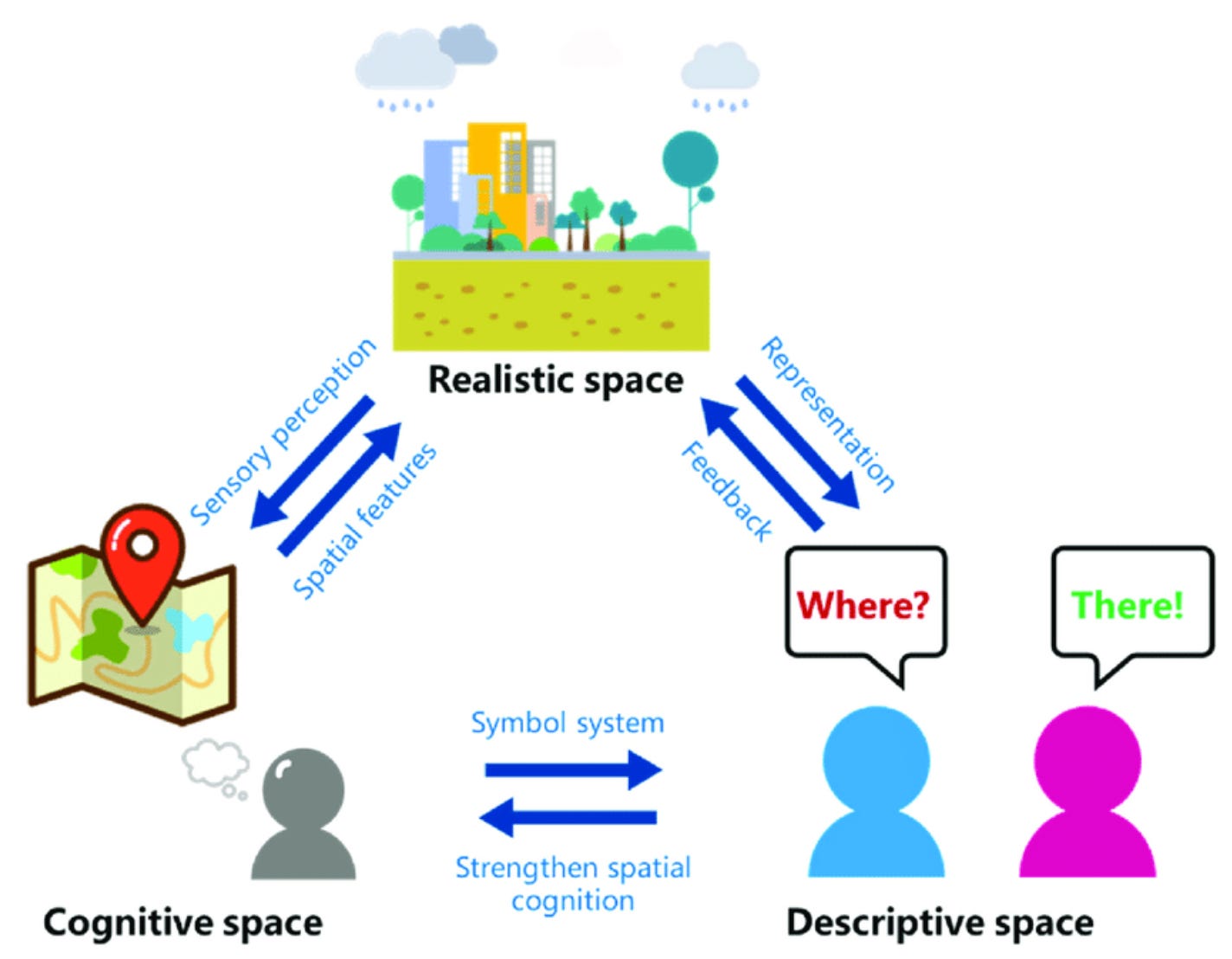 </figure>
</figure>Navigation, Mood and the Brain
Interestingly, studies have found that depressed persons show an impairment of spatial cognition. One study observed specifically that “implicit memory for spatial context is severely impaired in clinically depressed patients.” Another study notes that bipolar depression causes deficits in visuo-spatial memory.
According to a 2021 paper in the journal Behavioral Brain Research, investigating the willingness to explore a space is a common method for understanding anxiety and depression in animals.
Exploratory behavior plays a fundamental role in motivation, learning, and well-being of organisms. The open field test (OFT) is a classic method to investigate the exploratory behavior in rodents, also a widely adopted and pharmacologically validated procedure for evaluating anxiety and depression.
A 2007 study noted that rats that were less motivated to explore their space exhibited more anxious behaviors (as well as ate more sugar). Another study titled Happiness increases verbal and spatial working memory capacity where sadness does not looking at how positive and negative mood affected performance on different tasks designed to test working and spatial memory, found that positive mood conferred “the highest spatial working memory capacity score compared to [negative and neutral mood]”
“These findings suggest that positive mood may enhance executive control, which helped to maintain verbal and spatial information in working memory...”
Note: Interestingly, negative mood was found to facilitate executive control specifically when spatial working memory was required, though positive mood conferred the largest spatial working memory score.
Where this gets interesting is the effect depression has on the part of the brain that is the main hub for managing spatial information. The hippocampus is thought to generate our mental maps with “place cells” of the hippocampus representing where an animal thinks it is in its environment. (Artem Kirsanov has a great video summarizing the role of the place cells found in the hippocampus.)
Some birds and mammals store food that they can dig up later, but they’re only able to get that snack if of course they can memorize where it was hidden. Researchers noticed that the hippocampus was much larger in these animals that hid their food.
<figure>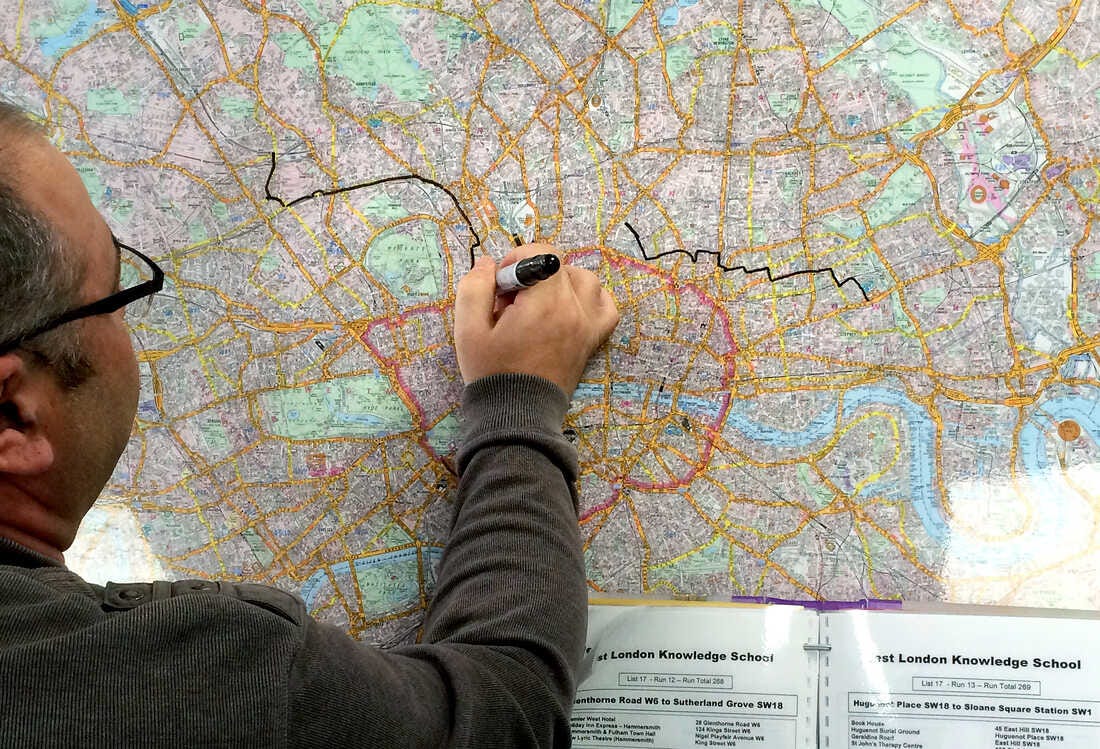 </figure>
</figure>Taxi Drivers are well known to have a larger hippocampus because they have rigorously trained their brains’ mental map crafting ability. To earn their licenses, London taxi drivers spend three to four years driving around the city to memorize 25,000 streets within a 10-kilometer radius of Charing Cross train station.
Neuroscientist Eleanor Maguire analyzed the brains of people training to become taxi drivers. MRIs showed that the successful trainees' hippocampi had grown after all that training.
The thing about depression is that it reduces the size of the hippocampus. As this 2008 paper notes: “Hippocampal atrophy (HA) has been constantly reported in depression, with levels of atrophy ranging from 8% to 19%.” This is a curious quirk of depression, but what’s exciting is that a 2016 paper suggests having a bigger hippocampus is protective against depression.
“Supporting this vulnerability hypothesis, never-depressed individuals with familial risk of depression were shown to have significantly smaller hippocampus than matched control participants and predictive of depressive episode in five years …the most unexpected finding was the increased hippocampal volumes in high N never-depressed participants...”<figure>
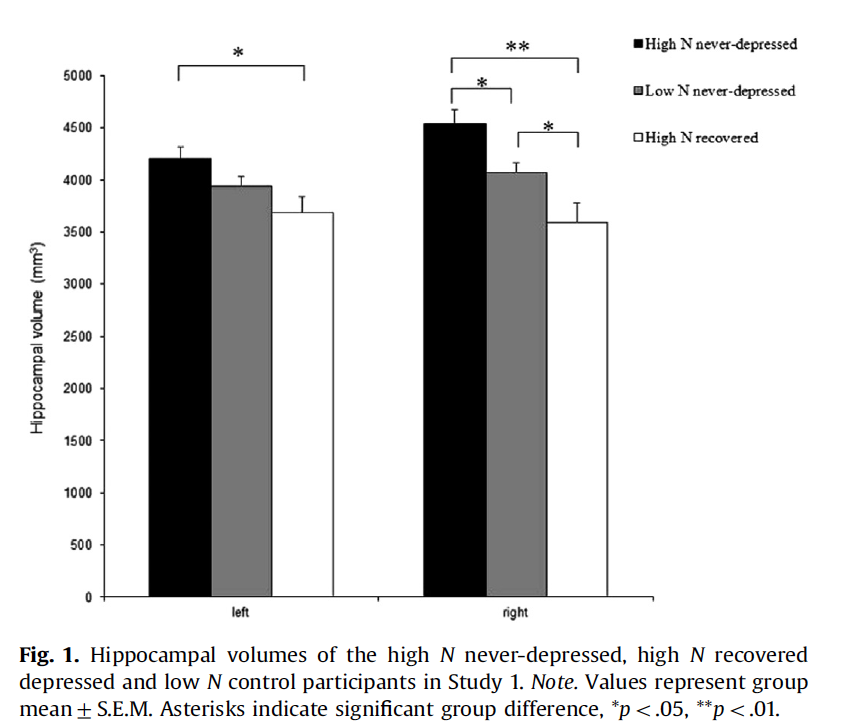 </figure>
</figure>Another 2008 study suggests that having a bigger hippocampus allows people to recover from depression quicker.
<figure> </figure>
</figure>Does this mean we should stop using Google Maps to have bigger a hippocampus and be happier?
Well… maybe.
I really doubt you’re going to find any mental health practitioner recommending that you don’t use Google maps, or that you should go out and memorize the location of everything in your city with just your brain and your own two eyes to increase your resilience to depression.
Though perhaps the mood benefits of hiking outdoors aren’t only due to the “forest bathing” effect or the brain benefits exercise offers, but are also due to having to investigate your environment and engage your hippocampus.
Obviously the point isn’t that being a bad explorer makes you depressed. Other factors are far more important, which is likely why taxi drivers still experience increased rates of depression despite having such powerful hippocampi. Excessive sitting, lack of exercise, disturbed sleep schedule and grabbing unhealthy food because it’s easy to get on-the-go are much more important factors.
However, this spatial cognition thing connects to a bigger discussion about the effect of atrophying our innate human powers by relying too much on technology. Nicholas Carr has talked extensively in his book The Shallows about how the internet and technology have drastically changed the way we use our brains.
<figure>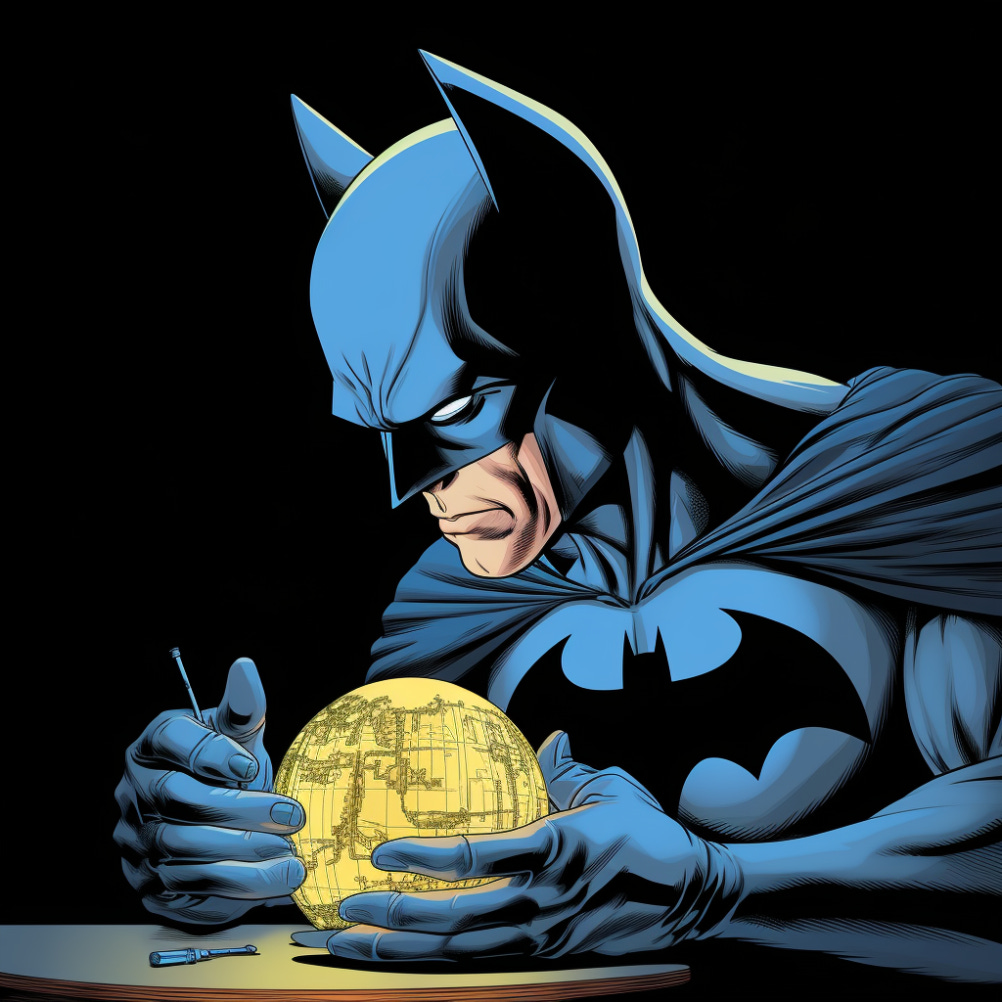 </figure>
</figure>The link between mood, testosterone and spatial cognition
One of the first accepted psychological sex differences was that of spatial cognition. Men on average have better spatial and visuospatial cognition that women. Yes, the stereotype is true: Women are worse at parking than men. A 2009 study (with the first author being a woman) found that men park more accurately and faster than women. It makes sense why human men should (typically) be more innately adept at spatial/visuospatial tasks - they did the hunting.
Hunting requires the spatial cognition necessary to navigate through the environment to track prey, and when it comes to taking down prey with projectiles, the visuospatial capabilities of tracking the speed and direction at which the prey is moving would be very necessary.
Indeed, rodent studies have found that males are more comfortable with exploring their environment than females.
Venturing into novel terrain poses physical risks to a female and her offspring. Females have a greater tendency to avoid physical harm, while males tend to have larger range sizes and often outperform females in navigation-related tasks.
This leads to some interesting connections:
・Men have 8-15x the testosterone of women
・Low testosterone is well known to be associated with risk of depression
・Women overall have almost 2x the risk of depression than men
・The hippocampus, a key site of spatial cognition is dense with androgen receptors. (The primary androgen is testosterone)
・Men low in testosterone have worse spatial abilities
・Testosterone improves spatial cognition
・Men (in general) have better spatial capabilities than women.
・A single dose of testosterone will improve spatial cognition (spatial rotation) in women.
Note: On average, males have larger hippocampal volumes than females, but this difference seems to disappear after adjusting for overall brain size. However, specific regions of the hippocampus seem to be bigger in men. Males have larger parasubiculum, fimbria, hippocampal fissure, and presubiculum where females show larger volumes for the hippocampal tail.(S)
Testosterone-rich men should make for great hunters. Not only would they be more willing to take the risk of venturing out into dangerous territory in search of nutrient-rich-meat-yielding game, but they would be better able to navigate that territory. Then, their testosterone-enhanced visuospatial capabilities would allow them to track and slay the prey. Further, research on the Tsimane subsistence hunters of the Amazon suggests that successful hunts causes the man’s brain to produce more testosterone for the man, which would theoretically further improve his visuospatial capabilities and make him an even better hunter. (Not to mention that the nutrient-dense meat would provide the substrates for making more testosterone)
Of course a similar argument could be made for locating berries or tubers, though I would argue that hunting requires more visuospatial capability.
So… go for a hike or walk, explore an area of your town you haven’t been to, do some horseback archery, chase down a chicken, or play a sport that involves a moving ball. Worse case scenario is you’ll have a bit of fun.